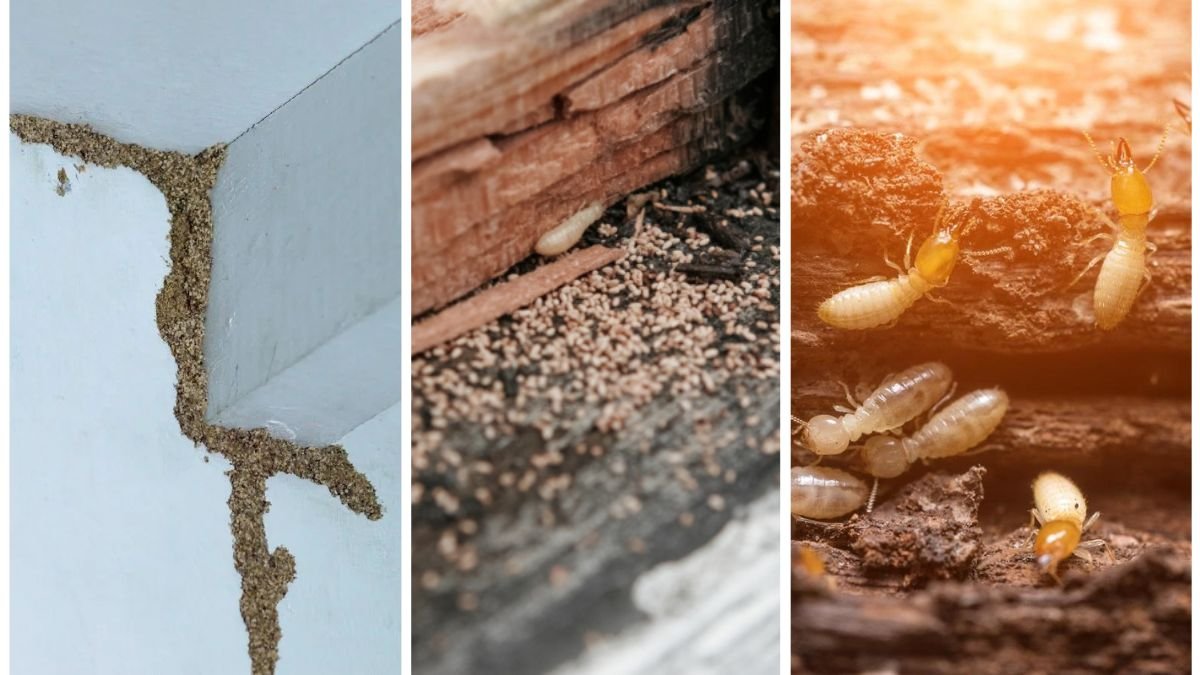Termites are often called “silent destroyers” because they can inflict significant damage before their presence is noticed. While commonly associated with wooden structures in homes, termites also inhabit gardens, feeding on dead plant material, mulch, and even live roots. Early detection in your garden is crucial to prevent structural damage to wooden garden features and protect the health of your plants.
This article explores the early signs of termites in gardens, their behavior, and effective strategies for monitoring and prevention, providing gardeners with the knowledge to maintain a healthy, termite-free outdoor space.
Understanding Termites in the Garden
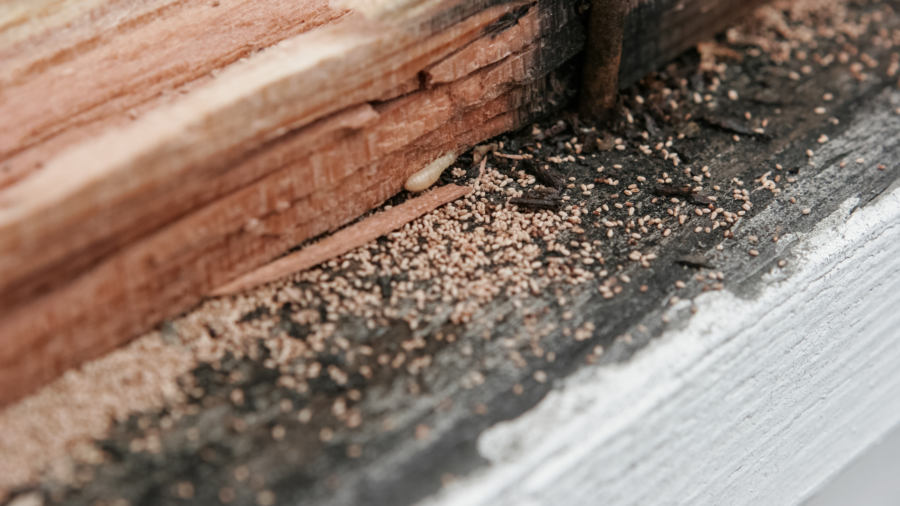
Termites are small, social insects that live in colonies. They play a vital ecological role by breaking down cellulose, recycling nutrients, and enriching soil. However, their feeding habits can be destructive in cultivated gardens.
Types of Termites Found in Gardens
- Subterranean Termites: Live underground and build mud tubes to access food sources above ground. They feed on live roots, mulch, and wooden garden structures.
- Drywood Termites: Typically found in dry wood but can infest wooden garden furniture, raised beds, and trellises.
- Dampwood Termites: Prefer damp, decaying wood and are often found in compost piles or mulch-rich areas.
Understanding the types of termites helps gardeners identify where to look for signs and implement appropriate preventive measures.
1. Mud Tubes and Tunnels
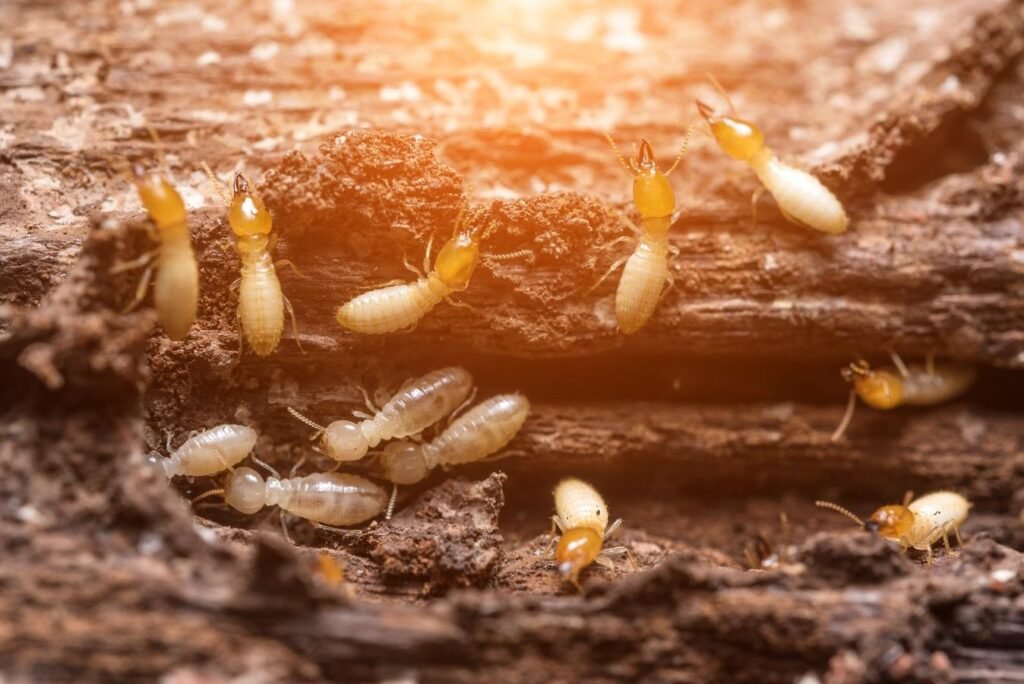
One of the most visible early signs of subterranean termites is the presence of mud tubes or tunnels:
- Appearance: Mud tubes are thin, pencil-sized tunnels made of soil, wood, and saliva. They often run along the base of garden structures, fences, or plant stems.
- Purpose: Termites construct these tubes to travel safely between the soil and above-ground food sources, avoiding predators and sunlight.
Tips for Detection
- Inspect wooden fences, raised beds, and tree trunks regularly for new tubes.
- Check along the soil line and under mulch layers where termites may hide.
- Break open a suspicious tube—if termites are present, small pale insects will be visible inside.
Early detection of mud tubes can prevent extensive root and wood damage in your garden.
2. Hollow or Damaged Wood
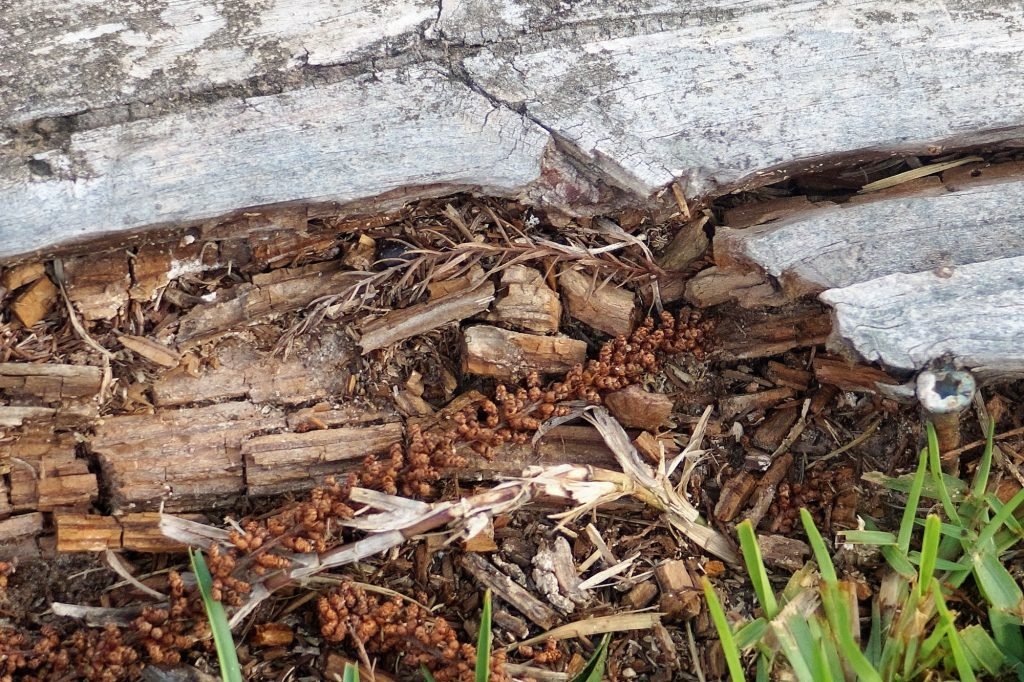
Termites feed on cellulose in wood, often leaving it weakened and hollowed out:
- Signs to Look For:
- Wooden garden structures or furniture feel soft or hollow when tapped.
- Peeling bark or small grooves on tree trunks.
- Tiny holes or channels on wooden posts or planters.
Inspection Tips
- Gently tap wooden surfaces with a screwdriver or small hammer to detect hollow areas.
- Check the undersides of raised beds, fences, and benches where moisture can encourage termite activity.
- Monitor for wood discoloration, which may indicate early decay caused by termite feeding.
Detecting wood damage early can help protect both garden aesthetics and structural stability.
3. Presence of Termite Wings
Swarming termites, also called alates, are a key indicator of an established colony:
- Appearance: Alates have two pairs of translucent wings, and they often emerge during warm, humid days in spring or fall.
- Behavior: After swarming, they search for new sites to start colonies, signaling active termite populations nearby.
Monitoring Tips
- Look for discarded wings on the soil, mulch, or near garden structures.
- Note any sudden appearance of flying insects around the garden.
- Maintain vigilance during peak swarming seasons to catch infestations early.
Observing alates provides a warning that immediate action is needed to prevent garden-wide termite problems.
4. Soil Displacement and Uneven Ground
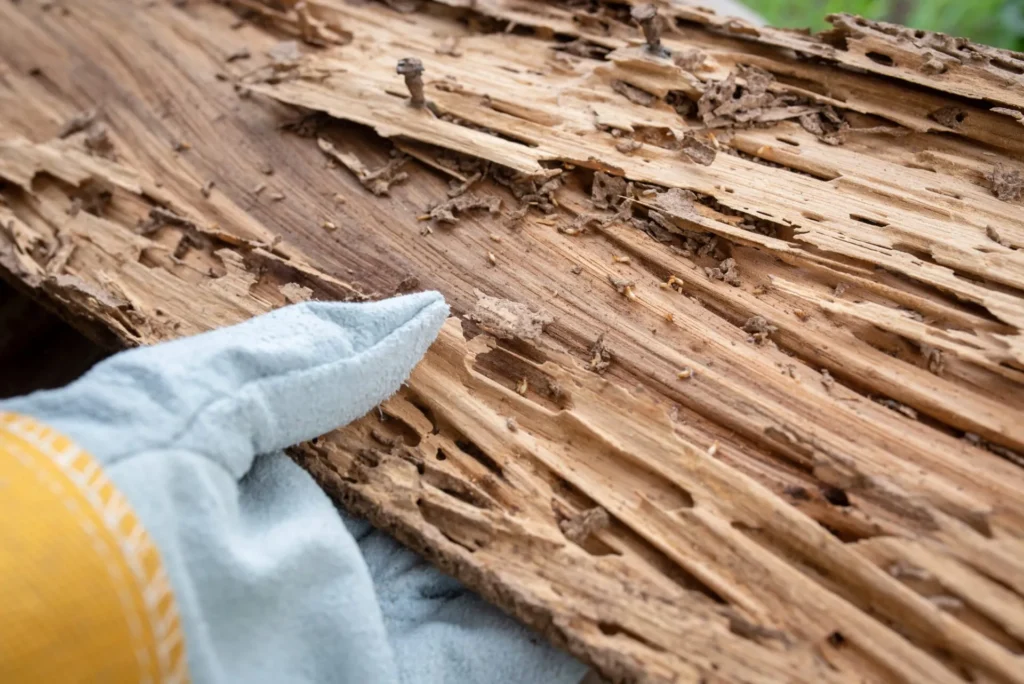
Termite activity can subtly alter soil structure, often before visible damage to plants or wood occurs:
- Signs to Watch For:
- Small piles of soil or sand near baseboards, posts, or plants.
- Slight mounds or uneven patches in the garden where tunnels exist below ground.
- Increased soil moisture in certain areas, indicating termite-preferred habitat.
Inspection Tips
- Walk the garden regularly to detect changes in soil texture or level.
- Pay attention to areas near trees, shrubs, and mulch-rich zones.
- Combine observations with checks for mud tubes and wood damage to confirm termite activity.
Early detection of soil displacement can prevent major root and landscape damage.
5. Plant Health Decline

Termites feeding on roots can affect plant health even before soil or wood signs are obvious:
- Symptoms Include:
- Wilting, yellowing, or stunted growth in otherwise healthy plants.
- Plants leaning or falling due to compromised root systems.
- Roots appearing hollow or shredded when inspected.
Monitoring Tips
- Inspect plant roots periodically, especially for vegetables, shrubs, and young trees.
- Compare affected plants with healthy ones to identify anomalies.
- Remove mulch carefully to check for tunneling near roots.
Recognizing early plant stress helps gardeners intervene before extensive root damage occurs.
Prevention and Control Without Chemicals
While chemical treatments exist, gardeners often prefer natural, eco-friendly options for garden health:
- Proper Mulch Management: Avoid overly thick mulch layers; keep mulch 2–3 inches deep and away from wooden structures.
- Regular Garden Inspections: Early detection through routine checks prevents large infestations.
- Remove Dead Wood: Dispose of fallen branches, logs, and decaying plant material promptly.
- Beneficial Nematodes: Introduce nematodes into the soil, which naturally prey on termites.
- Barrier Methods: Use physical barriers like metal or mesh around wooden structures or raised beds.
Combining these strategies can significantly reduce the risk of termite damage without harming the environment.
Combining Observational Strategies
For effective termite management, use multiple observational techniques together:
- Inspect for mud tubes and soil tunnels.
- Check wooden garden structures for early hollowing.
- Watch for termite wings during swarming season.
- Monitor soil displacement and uneven ground.
- Observe plant health for early signs of root damage.
Using these methods in combination ensures a comprehensive approach to termite detection and prevention.
Conclusion
Termites in the garden are often overlooked until they cause significant damage. By understanding their behavior and learning to recognize early signs—mud tubes, hollow wood, wings, soil displacement, and plant stress—gardeners can protect their plants, structures, and soil health.
Early detection allows for timely, non-chemical interventions such as proper mulch management, removal of dead wood, physical barriers, and the use of beneficial nematodes. These strategies maintain an eco-friendly garden while controlling termite populations effectively.
By staying vigilant and implementing preventive measures, gardeners can enjoy a thriving, termite-free yard, safeguarding both the beauty and productivity of their outdoor space.
